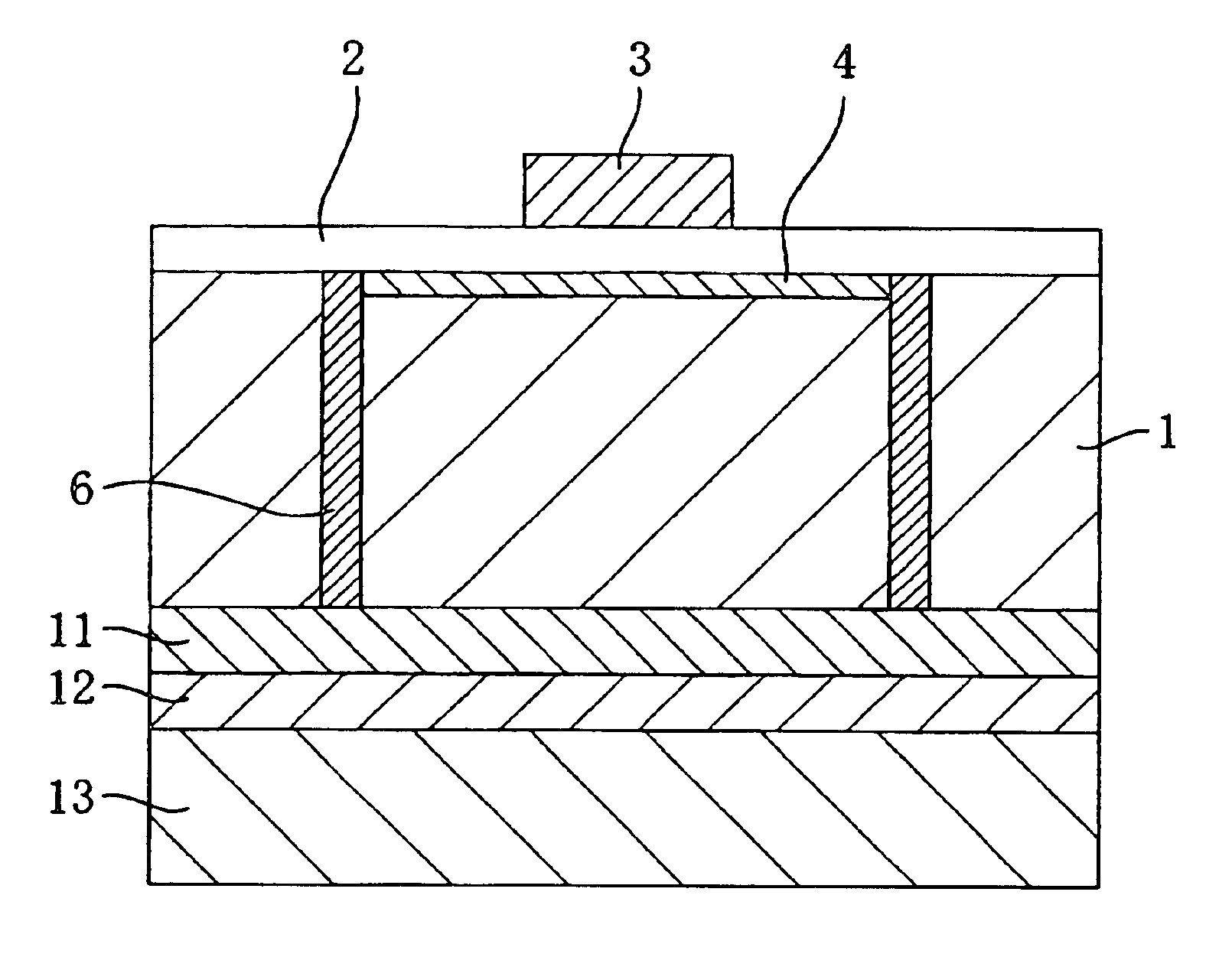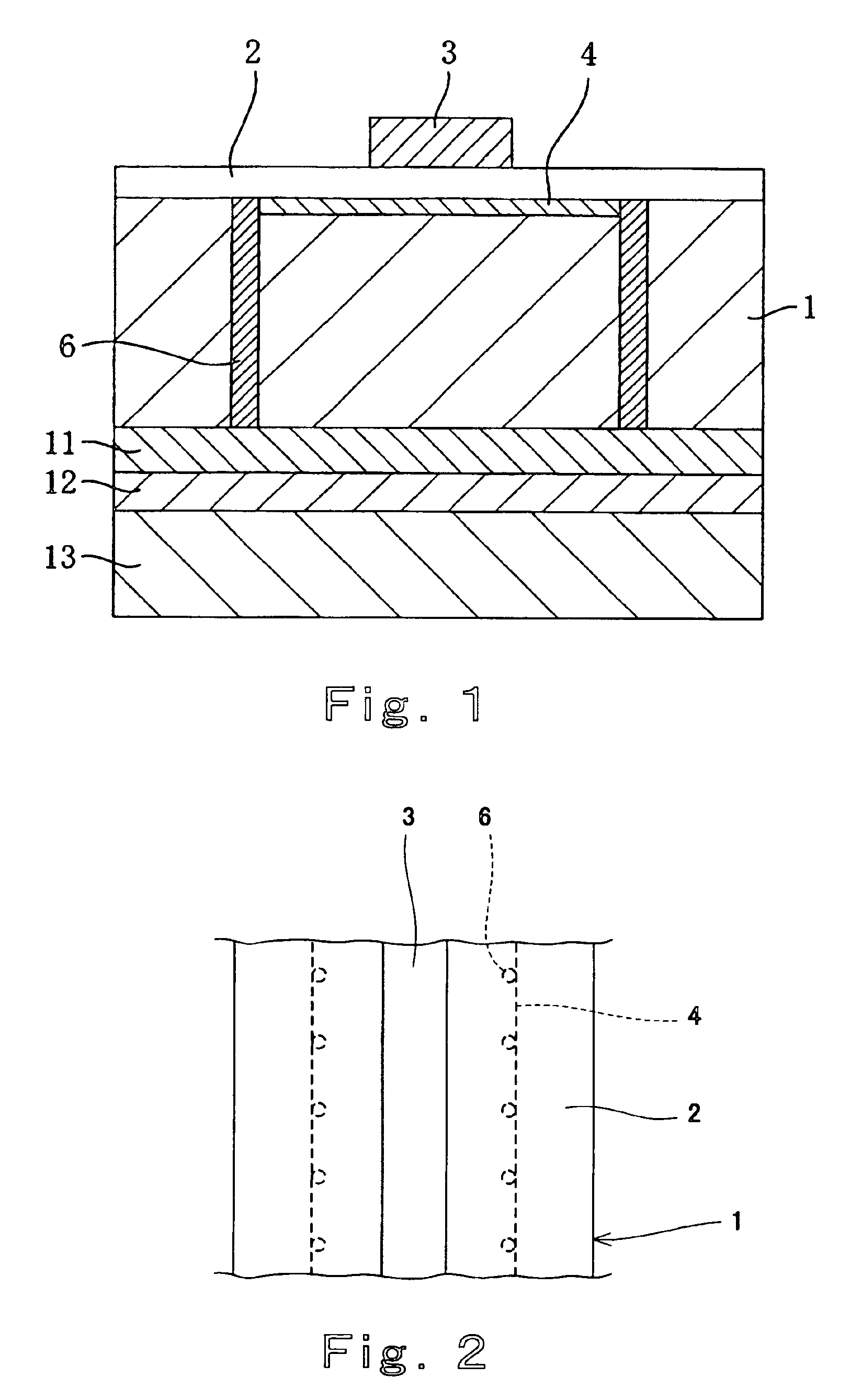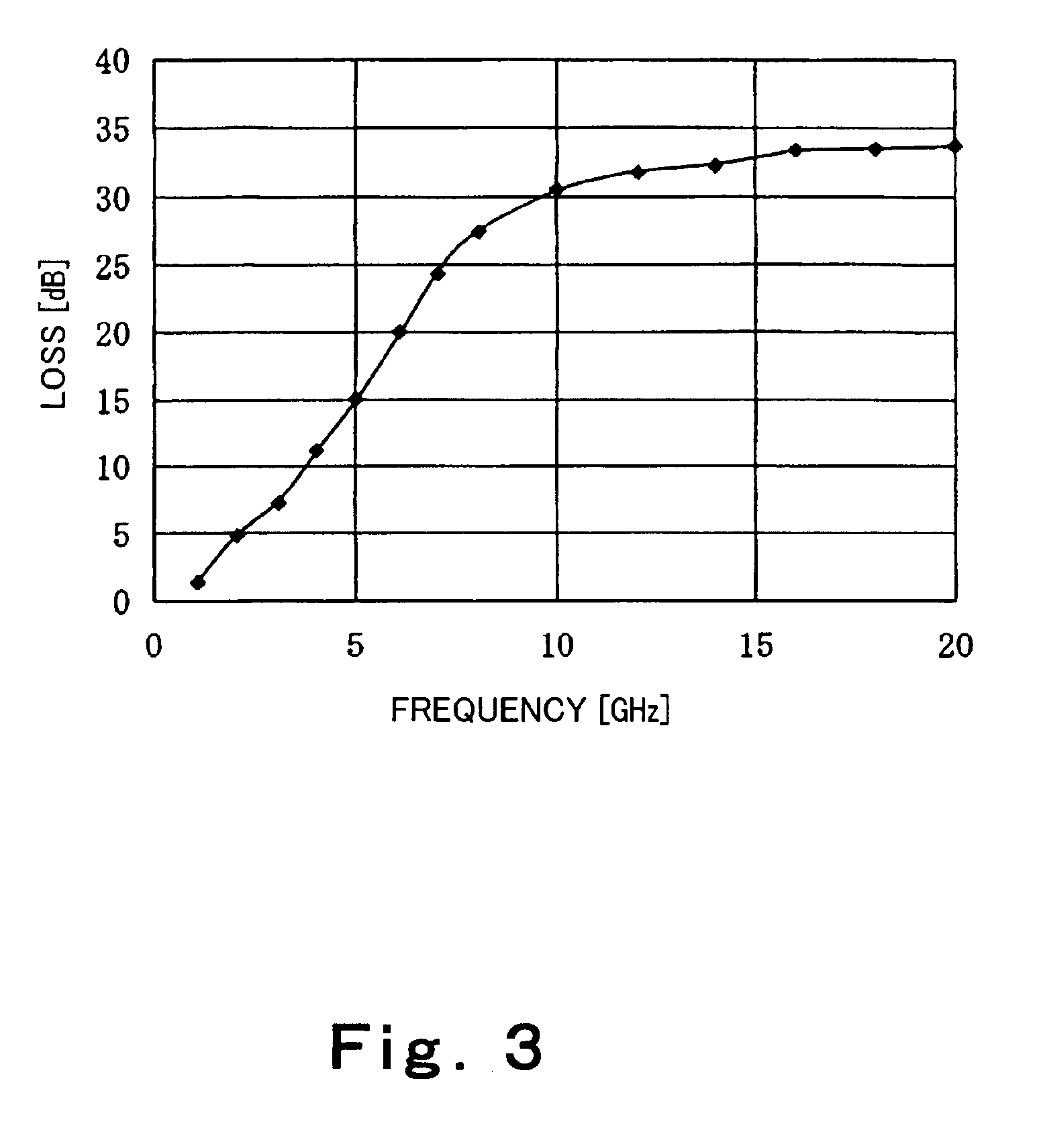Transmission line and semiconductor integrated circuit device
a technology of integrated circuits and transmission lines, which is applied in the direction of waveguide devices, multi-port networks, waveguide type devices, etc., can solve the problems of large voltage drop of power voltage supplied from the bias terminal tvd, unsatisfactory high frequency isolation characteristics between the elements and between the terminals both connected by transmission lines,
- Summary
- Abstract
- Description
- Claims
- Application Information
AI Technical Summary
Benefits of technology
Problems solved by technology
Method used
Image
Examples
first embodiment
(First Embodiment)
[0074]FIG. 1 is a sectional view showing a structure of a transmission line according to the first embodiment of the present invention, and FIG. 2 is a top view showing a structure of the transmission line of FIG. 1 as viewed from above.
[0075]As shown in FIG. 1, the transmission line of this embodiment is provided with a dielectric substrate 1, a dielectric film 2 disposed on a top face of the dielectric substrate 1, a signal strip 3 disposed on a top face of the dielectric film 2, a resistive layer 4 formed between the dielectric substrate 1 and the dielectric film 2 as opposed to the signal strip 3 with the dielectric film 2 disposed between the resistive layer 4 and the signal strip 3, a ground conductor layer 11 disposed on a bottom face of the dielectric film 2, penetrating conductors 6 penetrating the dielectric layer 2 to connect the resistive layer 4 to the ground conductor layer 11.
[0076]As shown in FIG. 2, the signal strip 3 and the resistive layer 4 are ...
example 1
[0087]The transmission line having the structure shown in FIG. 1 was fabricated as Example 1 according to the first embodiment of the present invention under the following conditions. The dielectric substrate 1 was formed by a gallium arsenide (GaAs) substrate having a thickness of 500 μm and a dielectric constant of 13; the dielectric film 2 was formed by a silicon nitride (SiN) film having a thickness of 1 μm and a dielectric constant of 7; and the signal strip 3 and the ground conductor layer 5 were formed by gold having conductivity of 3×107 S / m and a thickness of 5 μm. An impurity diffusion layer having a thickness of 0.2 μm and conductivity of 4×104 S / m was formed directly under a surface of the dielectric substrate 1 formed from gallium arsenide, and the impurity diffusion layer was used as the resistive layer 4. A width of the signal strip 3 was 20 μm, and a width of the resistive layer 4 was 100 μm. The signal strip 3 and the resistive layer 4 were disposed in such a fashio...
second embodiment
(Second Embodiment)
[0097]FIG. 5 is a sectional view schematically showing a structure of a transmission line according to the second embodiment of the present invention, and FIG. 6 is a top view showing a structure of the transmission line of FIG. 5 as viewed from above.
[0098]As shown in FIG. 5, the transmission line of this embodiment has a dielectric substrate 1, a dielectric film 2 disposed on a top face of the dielectric substrate 1, a signal strip 3 disposed on a top face of the dielectric film 2, a resistive layer 4 disposed between the dielectric substrate 1 and the dielectric film 2 as opposed to the signal strip 3 with the dielectric film 2 disposed between the resistive layer 4 and the signal strip 3, a pair of ground conductor layers 5 disposed on the top face of the dielectric film 2 as each opposed to the signal strip 3 with a predetermined spacing in the width direction of the signal strip 3, and penetrating conductors 6 penetrating the dielectric film 2 and connecting...
PUM
 Login to View More
Login to View More Abstract
Description
Claims
Application Information
 Login to View More
Login to View More - R&D
- Intellectual Property
- Life Sciences
- Materials
- Tech Scout
- Unparalleled Data Quality
- Higher Quality Content
- 60% Fewer Hallucinations
Browse by: Latest US Patents, China's latest patents, Technical Efficacy Thesaurus, Application Domain, Technology Topic, Popular Technical Reports.
© 2025 PatSnap. All rights reserved.Legal|Privacy policy|Modern Slavery Act Transparency Statement|Sitemap|About US| Contact US: help@patsnap.com



